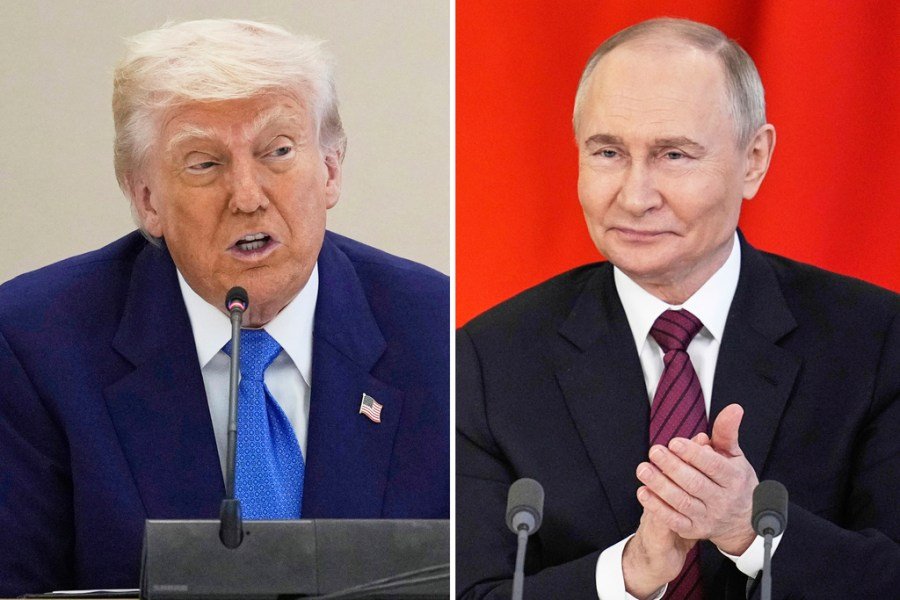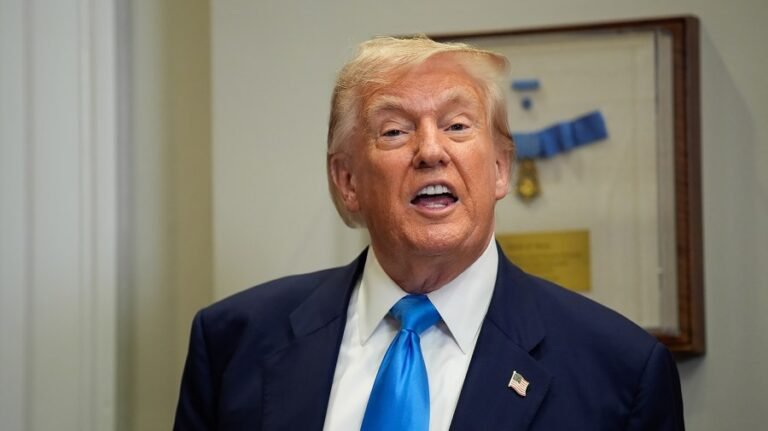
President Trump’s announcement this week of a shortened window of “10 to 12 days” for Russian President Vladimir Putin to reach a ceasefire agreement in Ukraine reflects a continued evolution in his rhetoric. His growing frustration with Moscow and his willingness to speak plainly about Russia’s escalation send a signal that many in the U.S. and Europe have been waiting to hear.
But while the shift in tone signals growing frustration, it has not translated into action. Russia reads the action as a continued pause in pressure, which it has used to intensify its offensive against Ukrainian homes and hospitals.
Russian forces are now making their fastest territorial gains in more than a year, and their attacks are becoming more sophisticated. Swarm tactics using Iranian-designed Shahed drones, now mass-produced and adapted inside Russia with Chinese parts, are overwhelming Ukraine’s air defenses at an alarming rate.
In just one day last month, Russia launched 728 drones, decoys and missiles in a single coordinated wave. Ukrainian interceptors and radar crews are doing heroic work, but they are stretched to the limit.
The U.S. has tools at its disposal that remain unused. For months, a bipartisan sanctions bill, co-authored by Sens. Lindsey Graham (R-S.C.) and Richard Blumenthal (D-Conn.) and backed by 85 senators, a veto-proof majority, has been ready to move. The legislation would impose steep secondary tariffs on countries like China, India and Brazil that continue to buy Russian oil and gas, and would significantly raise the cost of doing business with Moscow.
But in July, Senate leadership pulled the bill from consideration after President Trump suggested he would act if Russia failed to move toward peace within 50 days. Senate Majority Leader John Thune (R-S.D.) said he would “hold off” on advancing the bill, signaling that Congress would defer to Trump’s timeline. House leaders followed suit.
That decision was a mistake. While it is encouraging to see President Trump express increasing resolve, deferring congressional action in the hope that Putin will suddenly negotiate has only given Moscow more time and space to escalate. Every week of delay is a missed opportunity to tighten the financial pressure on Putin’s war machine.
And the clock is not just ticking in Ukraine. The broader contest involves China, too.
Beijing’s role in this war has become increasingly visible. Chinese companies are supplying entire weapons systems, not just components. Chinese-made drones and decoys are helping Russia saturate Ukrainian airspace. Chinese officials have even welcomed delegations from occupied Ukrainian territories and continue to sell heavy machinery to companies operating there. European officials report that China’s foreign minister recently told the EU that Beijing does not want Russia to lose the war and fears that a Russian defeat would allow the U.S. to focus more squarely on Asia.
Ukraine has responded accordingly. In early July, Kyiv arrested two Chinese nationals on espionage charges after they allegedly attempted to steal information about Ukraine’s Neptune missile program. Days earlier, President Volodymyr Zelensky imposed sanctions on five Chinese firms accused of supporting the Russian war effort. These are not symbolic gestures, they are signs that Ukraine is increasingly realistic about the stakes and about China’s alignment with Moscow.
Support for Ukraine is not a distraction from U.S. competition with China. It is a critical part of it. Weakening Putin’s military capacity weakens a key pillar of China’s global strategy. And allowing Russia to continue its aggression without consequence would embolden Beijing’s worst instincts from the Taiwan Strait to the South China Sea.
To its credit, the Trump administration has begun voicing stronger concerns about Beijing’s role. In the recently concluded round of trade talks, senior U.S. officials reportedly raised objections to China’s purchase of sanctioned Russian oil and its sale of more than $15 billion worth of dual-use technology to Moscow. These are important warnings — but without follow-through, they risk being absorbed into the pattern of delay that Moscow and Beijing are already exploiting.
The Graham-Blumenthal sanctions bill should move forward. It represents the most serious effort yet to impose real costs not only on Russia, but on the network of countries (especially China) helping it survive sanctions. It complements, rather than competes with, the administration’s efforts to pressure Moscow. And it sends a message that the U.S. is serious about backing up its warnings with action.
Countdowns can be useful. They create urgency. But urgency without follow-through is no substitute for strategy. What matters now is not how many days remain on the clock, but whether we are using each one to act.
Jane Harman is a former nine-term congresswoman from California and former ranking member of the House Intelligence Committee, who most recently served as chair of the Commission on the National Defense Strategy. She is the author of “Insanity Defense: Why Our Failure to Confront Hard National Security Problems Makes Us Less Safe.”


